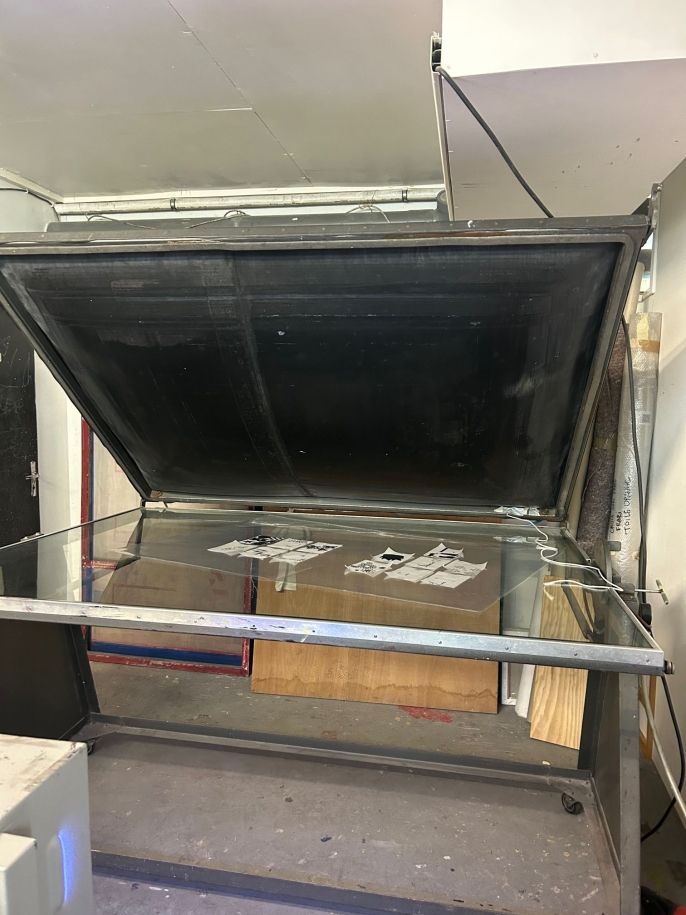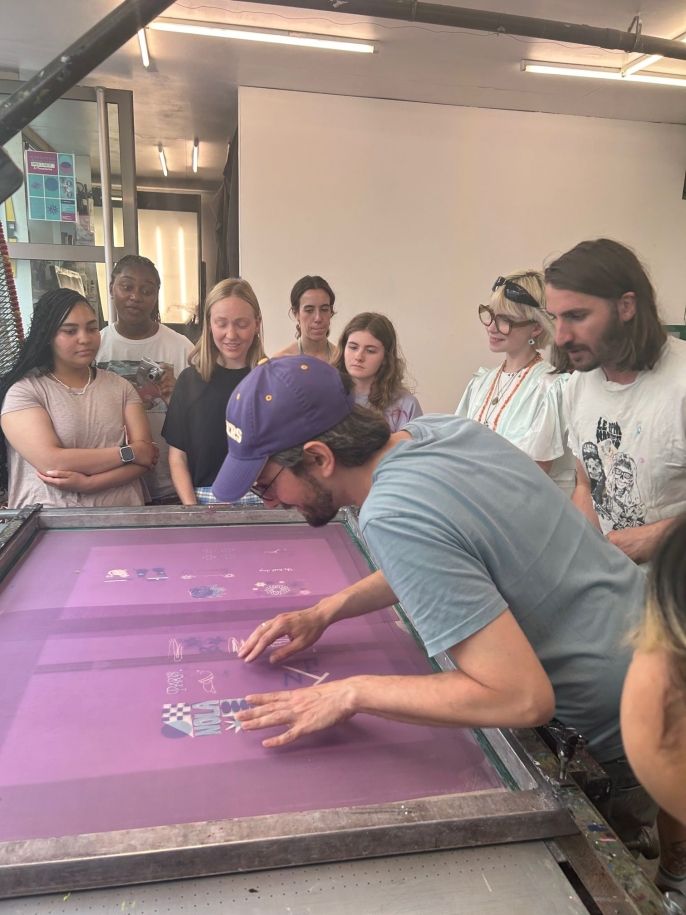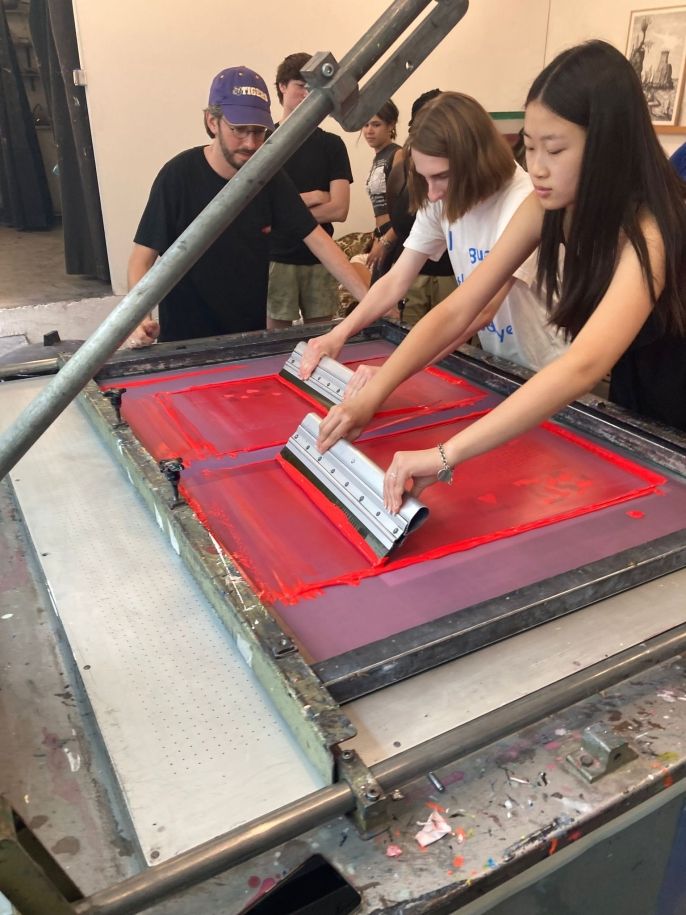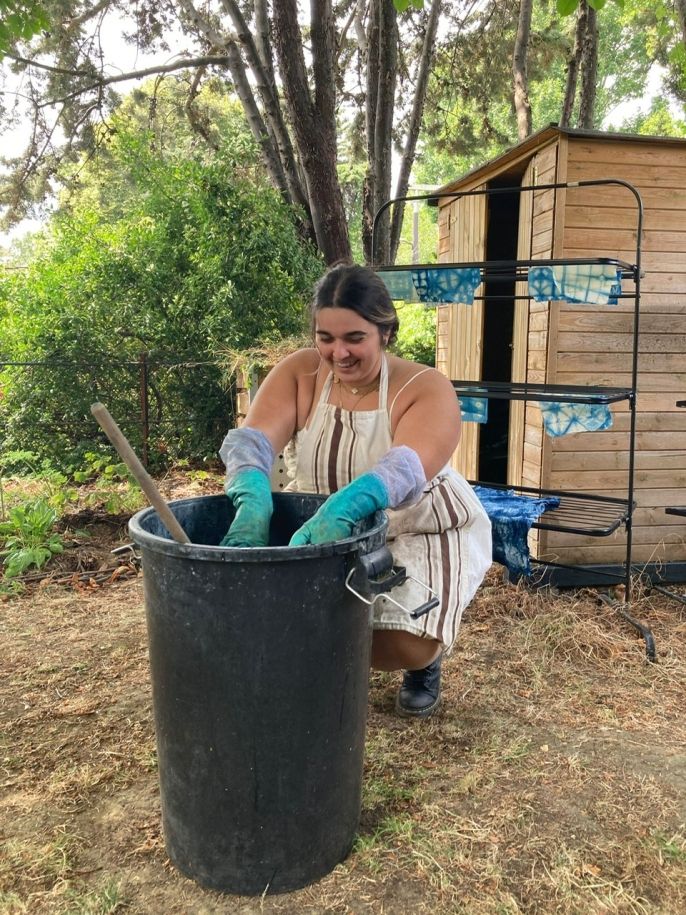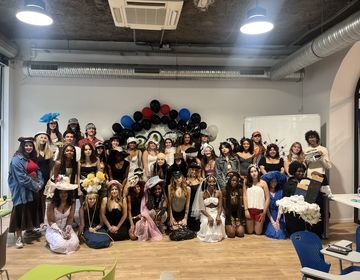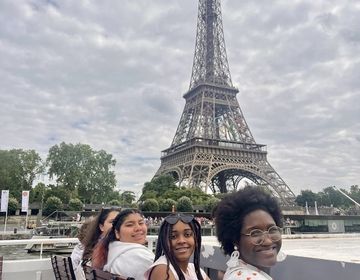All Hands On Deck
Last week, Paris Fashion and Design Global Navigators learned how to screen print using ancient techniques and how to tie dye fabrics using only naturally-derived materials. Through two hands-on workshops, students created their own screen printed postcards and tie dye t-shirts. Taught by experts in each craft, the activities began with an in-depth demonstration on the technique and cultural significance of both of these age-old cultural practices.
Screen printing—invented in China around 221 AD—began as a means of transferring complex patterns and designs onto fabric. Later on in the 20th century, contemporary artists like Andy Warhol and Robert Rauschenber popularized screen printing on paper as a technique in contemporary pop art. Nowadays, screenprinting's influence on fashion and art is seen on many of the graphic t-shirts hanging in your closet and the posters hanging on your wall. Prior to the workshop, students designed their own multi-layered patterns. They then watched as the guide explained the UV light processing technique, which turned their templates into printable screens. Finally, they got to participate in the ink transferring process, which when using two colors (as the students did), requires multiple passes. The final result: designs brought to life by the students themselves in vibrant blue and pink screen-printed ink.

In the second workshop of the week, students dyed their own garments using naturally derived indigo dye. Plant dyeing is beneficial in many ways. It has a low environmental impact and focuses on the use of raw and organic materials rather than harsh chemical dyes. Plant dyed garments are also often hand-made to last much longer than clothing items bought from popular retailers. During the demonstration, the guide showed students which plants produce which colors of dye; some of which can be found in our own homes. Avocados, for example, produce a beautiful pale pink color when processed into a dye. Students then practiced different techniques used when tie dyeing: they folded or scrunched fabric samples to see which type of design would be produced. Finally, they put what they learned to the test by dyeing t-shirts in the indigo vats. Some chose to follow intricate patterns, while others took a more random approach—curious to see what kind of pattern would be produced as a result. In the end, students walked away with the best souvenir anyone could ask for: an authentic naturally dyed t-shirt that they made themselves!

Related Posts
Goodbye, Paris!
Wow! What an amazing final week the HSSA Fashion Design students had! We started the week with an awesome trip to Lyon, France, where we were able to immerse ourselves... keep reading
Excited for Week 2!
It's hard to believe we are already in week two of the Fashion Program. Time definitely flies when you are having fun. The week has been amazing. Students saw a... keep reading
Our Adventures Have Begun!
Week 1 of the Paris Fashion Program is off to a great start! Students are adjusting to the time change and already feel comfortable navigating the Metro to get around... keep reading

